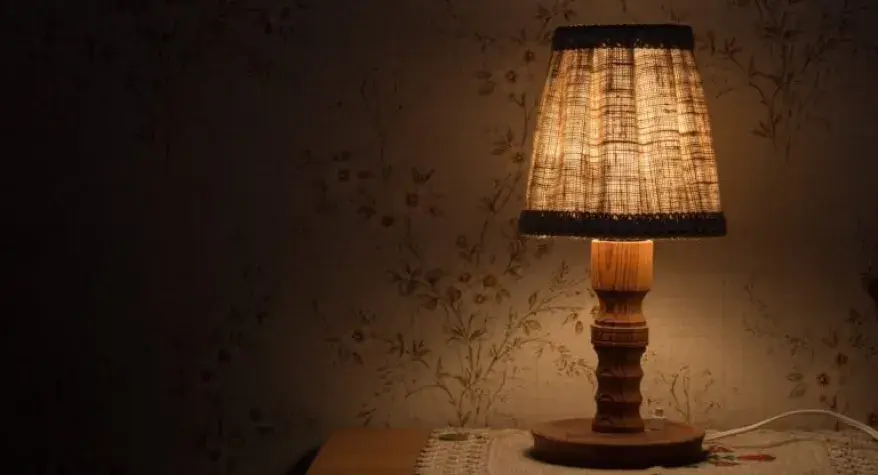How to find an electrical fault in a house
It is not always easy to find electrical faults in your home or property, but being able to identify where the electrical fault is and understand how to correct them (whether that is by yourself or asking an electrician to fix it for you) is very useful.
For example, imagine your bedside lamp has stopped working. This is an isolated problem but there are still a number of things that could have gone wrong - the bulb, the fuse, a faulty wire or a fault with the lamp itself.
There are several things you can try to identify the problem. Changing the bulb is probably the first step. Or checking the original bulb in a different lamp. But you need to think about other things - are there any noises coming from the lamp? Is the light flickering? Is there a burning smell?
If your problem is of a bigger scale then you can imagine having to scale up both the potential problems and the potential solutions. You should always remember that electricity is dangerous and in many situations the safest option is to ask a domestic electrician to problem-solve for you, rather than attempt anything yourself.
Let me help you to at least focus your efforts if you do need to identify a problem.
If your electricity supply is working
Here are a few things to note if you have a problem and your electricity supply is working. Firstly, work out how many appliances are affected.
- If it is just one, then try the appliance in a different socket to establish if the problem is with the appliance or the socket. If it doesn’t work in a different socket, then the likely problem is with the appliance and you should check the plug. Wiring may have become disconnected or the fuse may need replacing. Alternatively, a bulb may need replacing. If the appliance is faulty then it may need repairing or replacing. If the appliance does work in a different socket, then the likely problem is with the original socket and you need to ask an electrician to have a look.
- If it is more than one appliance, then check the fuse box. A circuit breaker may have tripped or a fuse may have blown. Turn off all your appliances, then reset your circuit breaker by putting the switch in the upright position. Then manually check each appliance by turning them on one by one, checking the fuse box each time. This will identify the broken appliance.
If you still have problems then you should contact a domestic electrician.
If your electricity supply is not working
You should check if your neighbours have power (look to see if their lights are on) as it may be that power has been cut to your local area.
Reset the main switch in the fuse box. If it trips again, then check each circuit breaker in turn.
If you still have problems then you should contact a domestic electrician as they are skilled and experienced in electrical fault finding.
Electrical Fault Finding Help
Here are a few other tips to electrical fault finding. But remember, my advice is always to ask an electrician for help in order to keep you, your loved ones and your property safe.
Light Switches not working
Light switches that do not work properly, can indicate a poor quality product, the incorrect type of bulb or a fault in the light fitting, the circuit or the wiring. With so many possible root causes, you should ask an electrician to help identify the problem here.
Light bulbs flickering
This is an electrical fault and is usually caused by a poor connection on the circuit. Isolating this can be tricky and so you should call in an electrician to sort this out.
Circuit Breaker tripping
A circuit breaker can trip for 2 reasons
1. Overload
Using several higher wattage items (such as microwaves or hairdryers) on the same circuit can cause the circuit to trip. If this happens regularly, then look at what you were using when it tripped and remove appliances one by one to find the faulty appliance. If the items used on the circuit use more Amps that the fuse/circuit breaker can handle it will trip.
2. Short Circuit
If in an appliance or somewhere in the wiring of the installation live and neutral touch this will cause a short circuit and blow the fuse/trip the circuit breaker.
Electrical Surges
These can be caused by faulty appliances and bad electrical wiring. Each surge will only last a few seconds, but multiple surges will damage electrical appliances. Again, try removing appliances when you are not using them to see if this helps.
Electrical Shocks
Electrical shocks are not nice, even if they are mild. They can happen when turning appliances on or off and they can be caused by the appliance itself or the wiring within the socket. You could test the appliance in another socket - but beware of getting another shock! Again, I would recommend asking an electrician to help if this happens often.
Ask an Electrician
Remember, electricity is dangerous and you should always put safety first. A domestic electrician is qualified and experienced in electrical fault finding, plus they have the right equipment to help them identify where a problem lies. I would always recommend that you ask for help rather than try to fix it yourself.




